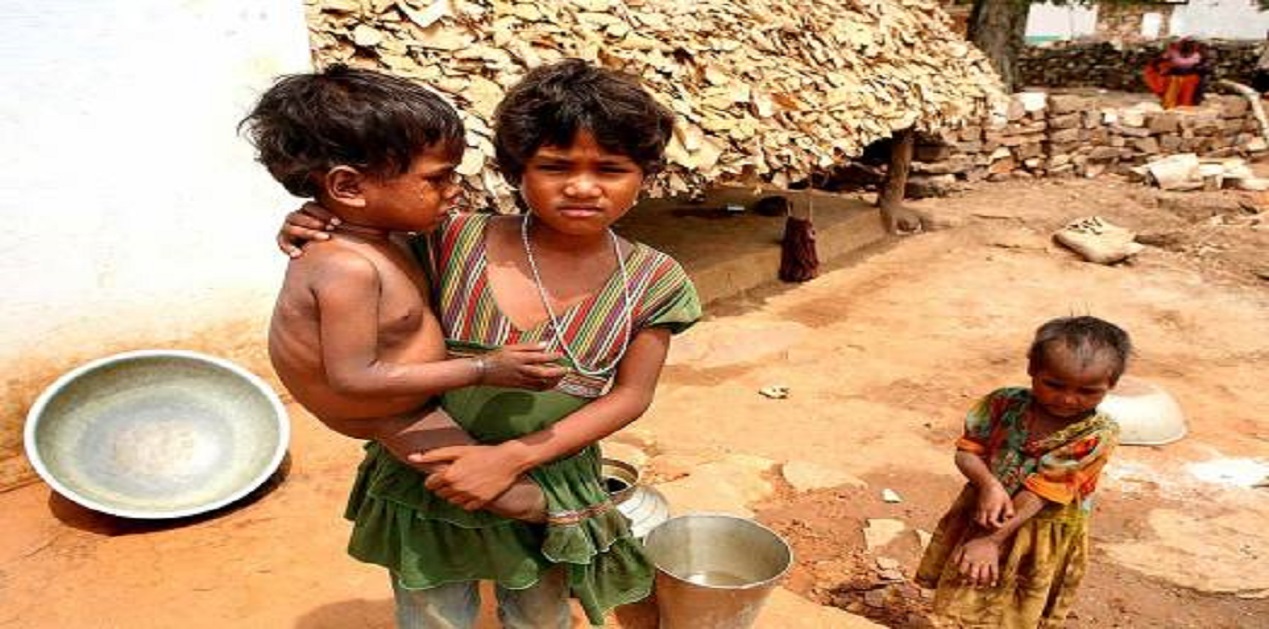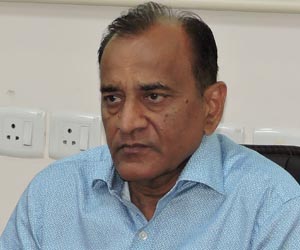On a visit to India this November, Bill Gates, co-chair of Bill and Melinda Gates Foundation, expressed his desire to see India eliminate the malnutrition crisis. “If there was one wish I had for India, it would be to get rid of malnutrition because that reduces the potential of those kids so dramatically and their ability to provide and learn are reduced. It’s like 15 IQ points go away”, he remarked. His foundation is actively collaborating with Indian agencies on various health-related issues.
Prime Minister Narendra Modi-led government too recognises the challenge, and it launched the National Nutrition Mission in March 2018. This is a multi-ministerial drive aimed at reducing the rates of malnutrition among children. The programme hopes to map various schemes that operate in the area, establish convergence mechanisms for better effectivity, and use real-time monitoring systems with the use of technology to address the issue. Targets have been set and various departments and personnel, including the Anganwadi network, have been tapped for nation-wide implementation of the project. The NITI Aayog too is engaged in a brainstorming exercise. Prime Minister Modi has been personally monitoring the progress, and in one of the meetings he suggested that informal channels should be used to raise social awareness on the dangers of malnutrition. Back in 2017 and later, he hoped that visible results should be seen by the year 2022.
PM’s stress on awareness is valid. According to a Hunger and Malnutrition Survey (HUNGaMA) in 2011 by the non-profit Naandi Foundation, eighty per cent of the mothers had not heard of malnutrition in their local language. It is, therefore, not surprising that the country missed this important Millennium Development Goal (MDG) in the set date of 2015. The problem is serious, though latest definitive government figures are hard to come by. The National Family Health Survey of 2006 reported that 48 per cent (61 million) children under the age of five in the country are stunted in height; 43 per cent (53 million) are underweight; and, almost 20 per cent (25 million) of the children are wasted (low weight for height). Of the 25 million wasted children, eight million suffer from acute malnutrition. Sixty per cent of the wasted children live in Uttar Pradesh, Bihar, Madhya Pradesh, Rajasthan, Maharashtra and Tamil Nadu.
A report of the Registrar General of India stated that in 2010, under-five mortality in India was 59 per 1,000 births, which was among the highest in the world. A Britain-based non-profit, Save the Children, said that more than 1.8 million children in India die every year due to malnutrition before they reach the age of five. The consequences are indeed grim. According to a report of the Indian Council of Medical Research (ICMR), Public health Foundation of India and the National Institute of Nutrition, over 68 per cent of the total under-five years of age deaths in 2017 were predominantly due to malnutrition. In actual numbers, it amounted to over seven lakh children under five dying primarily due to undernourishment. If these findings hold for future, there would be about nine per cent of excess prevalence of low birth-weight, nearly 10 per cent for stunting and close to 12 per cent for anaemia in children. Clearly, the National Nutrition Mission has his task cut out and it cannot take relief in the fact that the prevalence of under-weight and stunting has declined over the past few years.
These statistics should make us introspect on why various programmes initiated by successive governments over the decades have failed to make the required impact. The Integrated Child Development Scheme (launched in 1975), the Mid-Day Meal scheme (started in 1995) and the National Food Security Act of 2013 do not seem to have done much to tackle the menace of malnutrition. Unless there is a reset in implementation, the possibility of the new mission failing to achieve its target is high. It was only in 1991 that the country’s agencies began a count of malnourished children. The Integrated Child Development Scheme which had been initiated nearly two decades before that, had been touted as the world’s biggest project of its kind. No country other than the US had a programme of this kind. And yet, India has failed to effectively contain the danger, with experts lamenting that the country is slipping into a vicious cycle of malnutrition.
One of the biggest obstacles in tackling the problem not just in India but worldwide has been the unavailability of credible numbers. According to a World Health Organisation study of a decade ago, 300 children died worldwide because of malnutrition, but that cause was not recorded in their death certificates. Across the world, even when children somehow manage to live despite malnutrition, they are faced with stunting and underweight, the causes of which also largely go unrecorded. At least 170 million children were reported stunted as a consequence of undernourishment.
Though few, there are success stories that India can look to. Peru, for instance, where the Child Malnutrition Initiative (CMI) has done an excellent job. Formed in 2006, the CMI is an advocacy coalition integrated by various agencies working in the area of health. It received tremendous support from the government, with the Prime Minister himself heading the National Strategy for Poverty Reduction and Economic Opportunities. Certain most badly affected regions of Peru were able to reduce malnutrition rates significantly — six per cent during 2005-09. This may sound small in percentage terms but the impact has been on millions of children. Lessons can also be learned from African countries such as Senegal, Ghana, Angola, Ethiopia and Cameroon, many of which have reduced malnutrition over the last fifteen years by as much as 50 per cent.
While the causes of undernourishment among children vary from country to country and continent to continent — in African nations, for instance, it’s primarily the prevalence of poverty, drought etc — the solutions are largely in the common domain, and India needs to adopt them more effectively. Some of them are as follows:-
One, there has to be a commitment and oversight from the highest level of government. In Senegal, for example, the Fight Against Malnutrition Office is part of the Prime Minister’s Office. In Ghana, the ministries of Health, Education and Agriculture coordinate closely to fight malnutrition. The integrated approach has seen dramatic reduction in rates of stunting, increase in breastfeeding and intake of children’s protein.
Two, strong public-private partnerships have led to a greater reach of government programmes to combat undernourishment among children. For instance, Rwanda’s National Food and Nutrition Policy includes government departments, NGOs, the Rwandan Consumers Association and the Private Sector Federation. A similar linkage is evident in Ethiopia’s National Nutrition Coordination Body. While there is public-private partnership in India too, this needs to be scaled up.
Three, it is critical to anticipate factors that contribute to malnutrition. In the African country of Angola, for example, anticipating and acting upon crises has borne fruit. Nearly 2,000 community health workers were trained to detect — and respond to early signs of malnutrition with supplementary food before severe malnourishment set in. Nutrition early warning systems can help agencies step in before it’s too late.
Four, there must be easy access to nutritious food. Policies need to be formulated to encourage people to grow and eat nutritious food. This is where the Ministry of Agriculture in India can play an important role. In Cameroon, a mandatory food fortification programme led to the happy result of a drop in micronutrient deficiencies in children.
Five, the power of technology needs to be optimally harnessed. For this, India has to enhance the penetration levels of mobile Internet in the country. In rural India, it remains at a dismal 18 per cent, according to a report by the Internet and Mobile Association of India. The good news is that there is tremendous scope for improvement in this sector, and, if India is poised to cross the 500 million mark in Internet connectivity, it is largely driven by rural India. But various issues such as that of affordability and quality transmission of data have to be tackled.
We will do well to internalise African Development Bank president and winner of World Food Prize, Akinwumi Adesina’s prophet remark: “Stunted children today result in stunted economies tomorrow.” India’s dream of having a five-trillion dollar economy cannot become a true realisation unless we are able to reverse the trend of malnourishment.
(The paper is the author’s individual scholastic articulation. The author certifies that the article/paper is original in content, unpublished and it has not been submitted for publication/web upload elsewhere, and that the facts and figures quoted are duly referenced, as needed, and are believed to be correct). (The paper does not necessarily represent the organisational stance... More >>
Image Source: https://images.outlookindia.com/public/uploads/articles/2019/2/6/Malnutrition_12_20190129_350_630.jpg









.jpeg)
Post new comment